Kaarina 作者: 来源: 发布时间:2021-10-15
一、所属省或是州,具体位置,人口,面积
Kaarina is a small town and municipality of Finland. It is located in the Southwest Finland region and is a neighbouring town of Turku, which is the capital of Southwest Finland, therefore Kaarina is a part of the Greater Turku region. The municipality has a population of 33,449 (31 January 2019) and covers an area of 179.58 square kilometres (69.34 sq mi) of which 29.15 km2 (11.25 sq mi) is water. The population density is 222.49 inhabitants per square kilometre (576.2/sq mi). The municipality is unilingually Finnish, with a Swedish minority and e.g. a Swedish comprehensive school. Bilinguality was proposed but rejected in 2015.
The famous fetish artist Tom of Finland was born in Kaarina. Kaarina has a well known football team Kaarinan Pojat. The municipality of Kuusisto was consolidated with Kaarina in 1946. The municipality of Piikkiö was consolidated with Kaarina on January 1, 2009. At the same time, Kaarina adopted the coat of arms of Piikkiö.
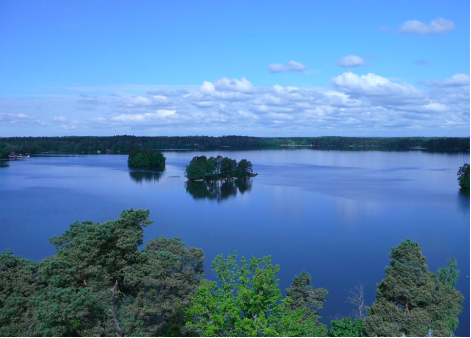
二、自然地理
1.地理条件
There are 19 nature reserves on private land in Kaarina: Kuusimäki, Rauvolanlahti, Vaarniemi, Parkinmäki, Karpanmäki grove, Finland 100 Tuorla forest, Rahinmäki, Linnavuori, Haukkavuori, Hirsundi, Juurvalli, Paltan and Kaarina forests, Paltan and Kaarina forests, Paltan , Jauhosaari, Jauholehto. Linnavuori Nature Reserve is a site protected through the Forest Diversity Action Program for Southern Finland (METSO). The aim of the METSO program is to halt the decline of forested habitats and forest species and to stabilize the favorable development of biodiversity.
In addition, Kaarina has two nature reserves established by a decree of the Ministry of the Environment, managed by Metsähallitus: the Kaarina Forest Nature Reserve and the Kuusistonlahti Nature Reserve.
Habitats protected by the Nature Conservation Act and in particular the habitats of protected species. There are two habitats protected in the Kaarina by the Nature Conservation Act (Section 29): the Paaskunta's hardwood forest and walnut grove (2.3 ha) and the Papinholm hardwood forest (1.8 ha). In addition, two habitats of a specially protected species have been protected in Kaarina by the Nature Conservation Act (Section 47): the Ala-Lemu bird pea stamen (four sub-areas in total approx. 0.4 ha) and the Mattelmäki ax flea beetle (approx. 0.6 ha).
On December 19, 2005, the Kaarina City Government has decided to establish WWF's heritage forest in the Lauste Forest. The aim of the heritage forest project is to preserve a small part of the typical southwestern Finnish forest area in Kaarina for future residents and to participate in the nationwide project. The area of the heritage forest complex is 35.9 ha. It has about 11.8 ha of forest, 12.7 ha of rock forest, 1.3 ha of swamp and 10.1 ha of open land (afforested landing area of the motorway). The forest of Lauste is very diverse in terms of natural values. There are represented e.g. fresh and dry cloth forest, wooded raven, Niinisvuori grove forest, barren almost open rocky rock pine forests, small ancient beach, unmanaged logging area and open afforested landfill areas. Although the forest is not completely old, there are very few traces of active management. The landfill area of the motorway, in turn, gives a good picture of the development of urban forest nature. The animals of the heritage forest are also diverse and you can meet e.g. endangered flying squirrel.
There are four Natura 2000 sites in the Kaarina area. One of these is also located on the side of the city of Turku. In the area of the city of Kaarina, the total Natura area is about 604 ha. From the name of each Natura site, a link leads to a more detailed presentation of the site on the state environmental administration page.
https://kaarina.fi/fi/asuminen-ja-ymparisto/ymparisto-ja-luonto/suojelualueet-natura-2000-alueet-ja-luonnonmuistomerkit
https://kaarina.fi/fi
2.交通情况
Kaarina is located with good transport connections. There are many recreational opportunities in our city. On the outdoor trails you can enjoy our beautiful nature or take a dip in the refreshing waters at our many beaches. You can find spiritual food in our lively cultural offer. Kaarina is conveniently located along the E18. The Föli regional bus easily takes you to Kaarina and the surrounding area. You can also land in Kaarina by boat. Föli, or public transport in the Turku region, will take you by bus to nearby municipalities. Kaarina's internal traffic routes, K1-K6, also belong to Föli. Road 110 can also be reached by other operators in the direction of Turku and Helsinki. The city of Kaarina has port operations in Voivala, Hovirinna, Koristonranta and Littoistenjärvi. From the port of Turku you can get to Mariehamn and Stockholm. The nearest airport is in Turku.
The nearest train stations are Kupittaa station and Turku railway station. Barrier-free and efficient public transport and invitational services are the primary means of organizing mobility for all. In addition to public parking spaces in the center of Kaarina, there are parking spaces for disabled motorists, ie places for the disabled. The city has one portable speed display panel, which is installed according to initiatives and needs for about a week at a time in places where you want measured data on the actual speeds of vehicles. The speed display measures traffic volumes and driving speeds. The information will be used to help respond to residents ’feedback and to determine the need for proposed retarders.
https://kaarina.fi/fi/tyo-ja-yrittaminen/kaarina-tyonantajana
https://kaarina.fi/fi
三、经济发展和规模
In 2020, the City of Kaarina will spend a total of EUR 210 million on the services and activities of the people of Kaarina. The municipal tax rate is 19.75 percent. The 2020 budget was approved by the City Council on November 12, 2019. The city of Kaarina prepares an annual budget for the next calendar year, which sets binding targets for the city's operations to guide the economy and operations. The preparation of the budget is based on the Municipal Act. The budget describes the city's activities and the planned development trends. The municipality's financial statements show in retrospect how well the financial and operational objectives set in the budget have been achieved.
Economic structure 2002:

The city has several dozen different people in various internships each year.
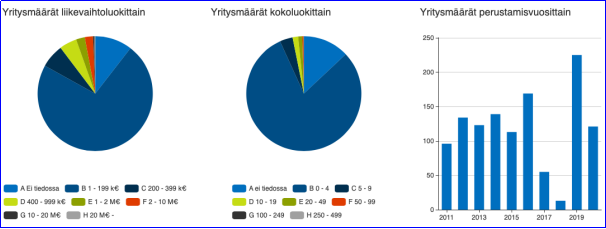
https://fi.wikipedia.org/wiki/Kaarina
https://kaarina.fi/fi
http://www.kaarinankehitys.fi/fi/yrityshakemisto.html
四、产业特点/重点项目
Kaarina is a city of almost 34,000 inhabitants in Southwest Finland. We employ about 1,800 professionals in various fields. Our appropriate size adds community spirit. Summer jobs in the city of Kaarina are applied for in the spring. It is nice to be in summer work in Kaarina. The city of Kaarina offers young people aged 16-25 from Kaarina summer jobs from different work units in the city through a lottery or an interview.
https://kaarina.fi/fi
https://kaarina.fi/fi/tyo-ja-yrittaminen/kaarina-tyonantajana
http://www.kaarinankehitys.fi/fi/yrityshakemisto.html
五、风景名胜,景点( attractions)
1. The Episcopal Castle of Kuusisto
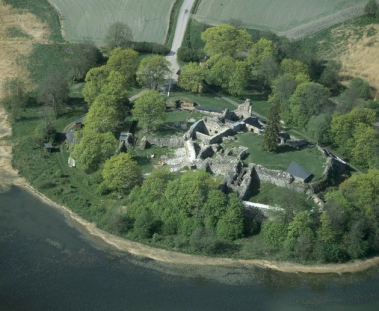
The Episcopal Castle of Kuusisto (Swedish: Kustö biskopsborg) was the castle of Finnish Catholic bishops on the shores of Piikkiönlahti in Kuusisto, in the area of what is now Kaarina. Founded in the late 13th or early 14th century, the castle was used for the Reformation. The castle was demolished by order of Gustav Vaasa in 1528. In the summer, the nearby Kuusisto Manor houses the Kuusisto Art Manor, which organizes contemporary art exhibitions and cultural events.
According to research, all cereals grown in Finland were used in the castle: barley, rye, oats and wheat. Hemp was used to make the coarsest fabrics, nets and cords. The castle beer was seasoned with hops. In addition, traces of parsnips, mad cabbage, yarrow, finch, walnut, strawberry, blueberry, raspberry, lingonberry, cranberry and cranberry have been found in soil samples from the castle. Kuusisto Castle, or Bishop Maunu Tavast during his glorious era, at the beginning of the 15th century. He is said to have built most of the castle. Around 1485, a large fire destroyed parts of the castle, but the damage was repaired. Maunu Särkilahti continued to equip the castle in 1489–1500. However, he is said to have complained about the high construction costs.
The fortification of the castle continued in the early 16th century. In 1522, Arvid Kurki, the last Catholic bishop of medieval Finland, tried to escape to Sweden. The castle fell into the hands of the Danes who attacked there. The castle's cannons had previously been taken to Turku to support the Swedish attempt to conquer the Danish-owned Turku Castle. Gustav Vaasa's troops re-conquered the castle in 1523. However, the crown was not interested in the castle and by the king's order Maunu Sveninpoika, the chief of Turku Castle, and his troops destroyed the castle in 1528. The Catholic Church did not want to have a base again.
The material dismantled from spruce may have been used in the construction of the Turku Castle forecourt. In addition, stone demolished from Kuusisto may have been used in the construction of Piikkiö Church. A barge with a stone load has been found near Kuusisto Castle. As late as the end of the 19th century, large quantities of bricks were demolished from the castle grounds and transported to Åland for repairs to Kastelholm Castle. The castle's old sea-facing gate has been found during excavations. Later, the castle was transported from the direction of the manor. The gate was closed and part of the castle received other uses.
The National Board of Antiquities has defined the ruins of Kuusisto Episcopal Castle and Kuusisto Manor as one of Finland's nationally significant built cultural environments. The Marine Patrol Flag Kuusisto Linnanyrjänät is named after Kuusisto Episcopal Castle.
https://kaarina.fi/fi
2.Pukkila Manor
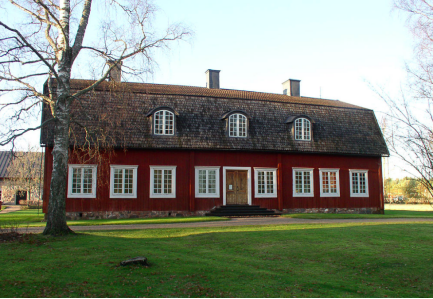
Pukkila Manor is a manor museum located in Kaikki, Piikkiö. The manor was owned by the Bock family from the 1540s until the 1720s. The current Rococo-style main building of the manor, built by Christoffer Johan Rappe, the then governor of Turku and Pori, who owned the manor at the time, dates from 1762. The floor plan of the main building is based on model drawings by Carl Wijnblad in 1755.
The museum presents the living conditions of the upper 18th century. The National Board of Antiquities renovated the farm's buildings to their original appearance in 1965–1970 and opened the manor to the public in 1970. The Pukkila Manor Museum is also one of Finland's nationally significant built cultural environments.
On United Nations Day 2017, it was reported that Kiinteistöosakeyhtiö Pukkilan Kartano has purchased the reputation of the farm for 400,000 euros. The new owner was to offer business premises in the manor complex to companies operating in the field of traditional construction and also to other companies in question. actors who value the environment. In the 2020s, operations continued as a business center focused on traditional construction.
https://kaarina.fi/fi
3. Kuninkaantie
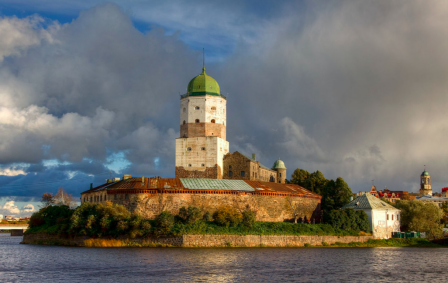
Kuninkaantie (Swedish: Kungsvägen) is an old postal route from Bergen, Norway, on the Atlantic coast via Oslo and Stockholm to Mariehamn, further through the Archipelago Sea to Turku and across Southern Finland to Vyborg and the Gulf of Finland to St. Petersburg. In Finland, the section of the road from Turku to Vyborg has long been called the Great Beach Road or Alisa Vyborginti. The road is a nationally significant built cultural environment. The section between Turku and Stockholm, on the other hand, is called the Great Post Road.
The Holli deportation system established by the Crown in 1734 united the kingdom on Kuninkaantie. In addition to accommodation and maintenance, the task of the inns and inns was to take mail and customers to the next inn. When the horses were not enough, the farms were required to supply men and horses to the inns. Under the law of the time, all those guests who could pay for their stay were forced to receive. There were to be inns on the side of the road every two miles (about 20 km) and they formed a network. In winter, the roads used by innkeepers were marked with conifers. When the state stopped the entertainment requirements for inns, the inn title was generally abandoned throughout the country and replaced by Guest Houses. Along the royal roads you can still visit some of the still operating guest houses or inns.
The medieval Kuninkaantie is older than Helsinki and the original road alignment does not pass through Helsinki. In the Helsinki metropolitan area, it traveled a long distance somewhat close to the current Ring Road III, from Jorvas in Kirkkonummi to Hakkila in Vantaa. The predecessor of Länsiväylä, which leads west from Helsinki, Jorvaksentie, built in the 1930s, originally ended in Jorvas in the west, where it was connected to the old main road. When Helsinki was founded, two branch roads leading from the King's Road to the city were built. At that time, the section of the old King's Road between Bemböle and Hakkila remained a by-pass by the city. Twice, attempts were made to close this section of road to public traffic, but to no avail. This was first done at the request of the bourgeoisie of Helsinki in the 1680s, because they considered their trade to suffer if those traveling by land traveled around the city. This was the second time this was done during Gustav III in 1772. On both occasions, however, the road was still ordered to be maintained as it was still used by the soldiers.
https://kaarina.fi/fi
六、历史文化
1.历史
In Kaarina's Ravattula, Muikunvuori has a prehistoric Stone Age and Iron Age residence with a burning cemetery, two sacrificial stones and an Iron Age mound tomb. Keetterinmäki has two Bronze Age burial mounds, one of which has been found with the burnt bones of three dead. Two ancient castles are known from Kaarina, Huttala Castle Mountain and Pussila Castle Mountain. Huttala Castle Hill may have been in use since the Bronze Age. The area called Kaarina next to Turku was first mentioned in 1309. At that time Kaarina was still the keeper. Its name comes from the Church of St. Catherine in the former district of the parish. The church now belongs to Turku, but the old coat of arms of Kaarina still depicted St. Catherine of Alexandria and a road bike (i.e. a catherine's wheel).
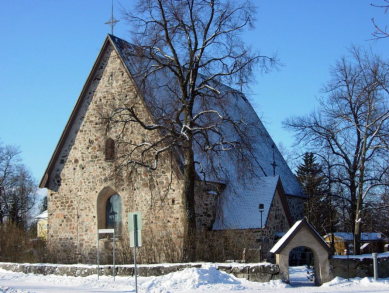
The parish was also initially called Numme, according to its then central village. Although Kaarina, based on the name of the church, became established as the parish, Nummi survived alongside it for a long time. As early as 1916, there is information that the popular name of the municipality would be Nummi. Remains of a medieval church dating from about the 12th century have been found in Ravattula, Kaarina. The finding was published in September 2013. Ravattula Church was a narrow-skinned building about ten meters long and six meters wide. It is located in the middle of a vast cemetery previously found. Part of the cemetery is almost a thousand years old. This is the oldest church found in Finland.
On the island of Kuusisto are the ruins of a 14th-century bishop's castle, from which it is still possible to identify in what kind of fortress the bishops of the Finnish Catholic Church were safe until the Reformation. The castle was demolished by order of Gustav Vaasa in 1528. Near the ruins of Kuusisto Castle is Kuusisto Manor, built in 1738, which served as the office building of the Colonel of the Turku Infantry Regiment. Before the manor in the Middle Ages, it housed the Kuusisto Latokartano, which took care of the agriculture and animal husbandry of the episcopal castle. Since the summer of 2013, the manor has housed a multi-sensory art exhibition venue, a café and an artist's residence under the name Taidekartano in the heart of summer.
The Finnish War began on February 21, 1808, when Russia crossed the Finnish border to get Sweden to join the embargo against Britain to strengthen France's position. The Swedish troops landed on 19 June in Lemunniemi, Kaarina, behind the Russians. A memorial by artist Heidi Limnell was unveiled in June 2008 in honor of the Battle of Lemu 200 years ago. Kaarina was declared an independent municipality on February 6, 1869. This year is considered to be the official founding year of Kaarina. [10] [18] Originally, in addition to its current areas, Kaarina comprised most of the areas south or east of the Aura River outside Turku, which now belong to Turku. A plaque has long been held on the wall of the old railway station building in the village of Littoinen on the Kaarina side in honor of V. I. Lenin's escape from Russia and left the train in Littoinen in 1907. Today, the plaque is attached to a large memorial stone next to the station building.
In 1939, Nummi, which surrounded St. Catherine's Church, was annexed to Turku. This happened on Kaarina's own initiative, as the maintenance of the workers' district on the Turku border became expensive for the municipality. However, Kaarina received practical compensation for this when the municipality of Kuusisto was annexed to Kaarina in 1946. Littoinen was still the largest agglomeration in Kaarina around 1960, but due to its location it was not suitable as a new agglomeration. Thus, an urban center was built in Ylikylä. As a result, the municipality's focus shifted more to the area at the intersection of the road to Parais.
In 1993, Kaarina considered that she met the requirements for a city and declared herself a city. On 17 December 2007, the municipal councils of Kaarina and Piikkiö reached an agreement according to which Piikkiö will be merged with Kaarina. The union took effect on January 1, 2009. The name of the expanding city remained Kaarina, but the coat of arms was taken as the coat of arms of Piikkiö.
https://kaarina.fi/fi
2. 文化体育
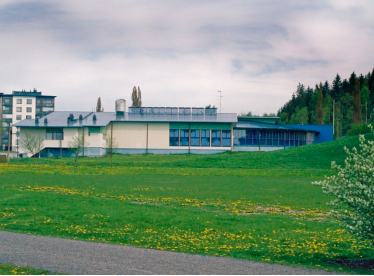
Kaarina has two football clubs founded in 1958, Kaarina Sojat from the center of Kaarina and Kaarinan Reipas from Kausina. Kaarina's Boys have played football in the second division for a long time. The club’s women’s representative team plays in the No. 1 division. In addition, Kaarina Nappulat, a junior football club founded in 1976, operates in Kaarina. The general club Kaarina URA (founded in 1932) played basketball since 1957. The club's basketball representative team merged with Turku YMCA in 2004 to form Aura Basket, which has now ceased operations.
In 2005, Kaarina's Ura Basketball Division resigned into its own special club, Ura Basket ry. Ura Basket ry is a special basketball club and its men's representative team plays at the main league level in the Basketball League. Career Basket is the largest of the sports clubs in Kaarina, with more than 800 enthusiasts. Kaarina's floorball club is the West Coast Sheriffs, who have players ranging from elementary school to the women's floorball league. The men play in Division II.
In Littoinen, on the border of the municipalities of Kaarina and Lieto, Littoinen Työväen Athletes, founded in 1932, operates. In addition to strong football activities, the club has a volleyball team and a ski division. Hockey in Kaarina is played by KaKiPo, or Kaarina's Kiekko-Pojat, whose representative team HCIK (HC Indians Kaarina) plays in the men's Finland series. Kaarina has many sports clubs, including Kaarina Pojat (Kaapo), Piikkiö Palloseura (Pips), Kaarina Nappulat (KaaNa), Kaarina Ura, Piikkiö Karhu and Piikkiö Kehitys.
https://kaarina.fi/fi
七、其他信息
Urho Sipponen has composed and Emil Vihanto wrote his own song for the municipality of Kaarina, which was separately recorded by the Turku City Orchestra and the youth choir of the Southwest Finland Music School in 1980. Since 1994, Kaarina has hosted an annual national Poetry-Kaarina poetry competition, which is open to all first-time poets. The winner will be announced at the Turku International Book Fair and the City of Kaarina will reward the winner by publishing his work and paying the author a normal author's fee.
https://kaarina.fi/fi
八、联系方式
Town manager: Harri Virta
Phone: +358 2 588 4000
Email: kirjaamo@kaarina.fi
Address: Oskarinkatu 4, 20780 Kaarina
https://kaarina.fi/fi
